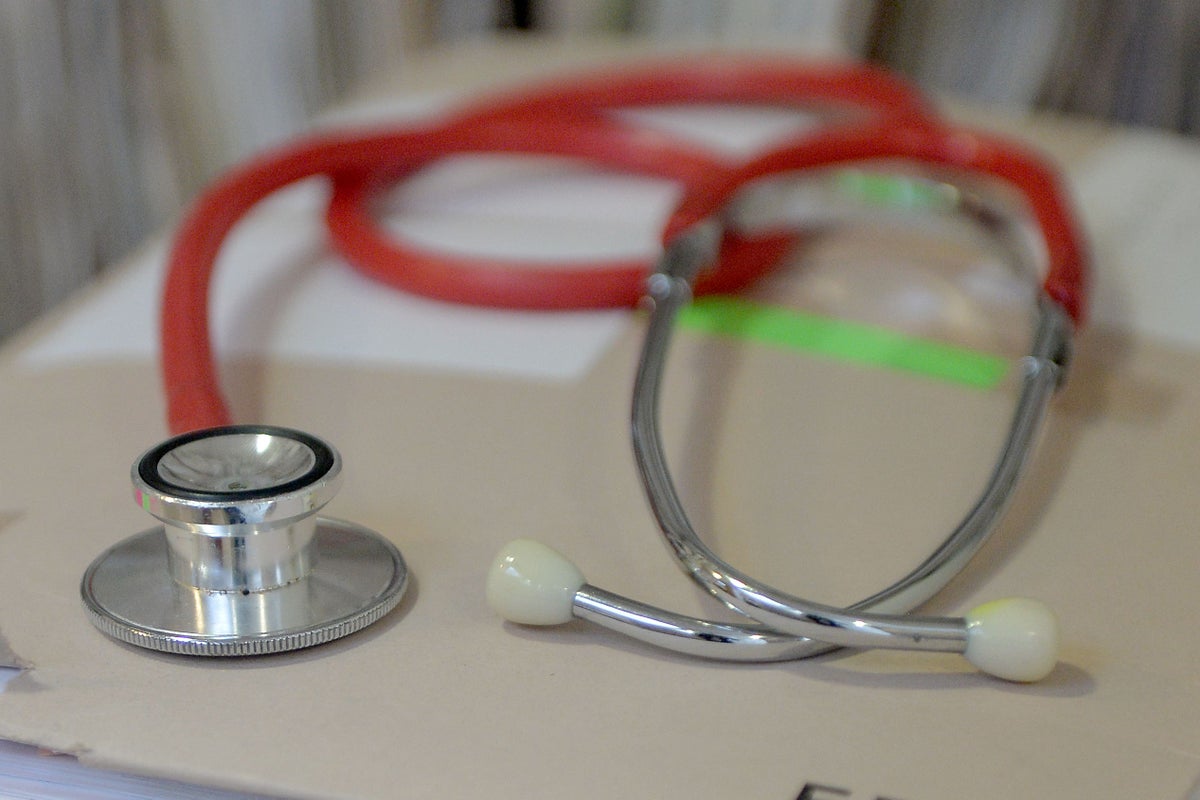
A reduction in the number of GP referrals to hospitals could be creating a “hidden backlog” of patients needing help, according to a new report.
The study by the Institute For Government (IFG) and Public First said not enough data is published about the “advice and guidance” referral system.
Family doctors have been told to reduce the number of people they refer for hospital care by using the “advice and guidance” route – whereby a GP will call or email a hospital doctor to ask for advice on whether or not a referral is required.
The method has been used since 2015 but NHS England introduced a target for GPs to have 12 “advice and guidance” patients for every 100 outpatient appointments in October 2021 in an attempt to reduce the backlog of hospital care.
This has now increased to 16 but it has been reported that as many as 22 out of 100 potential hospital appointments are being handled this way.
There is a risk that GPs making fewer referrals – in part to address hospital capacity concerns – is creating a 'hidden backlog' by allowing treatable conditions to deteriorate and possibly leading to more unplanned admissions— IFG and Public First report
The IFG and Public First report states: “There is a risk that GPs making fewer referrals – in part to address hospital capacity concerns – is creating a ‘hidden backlog’ by allowing treatable conditions to deteriorate and possibly leading to more unplanned admissions.”
The authors said “we know little about the impact of the advice and guidance” referral route.
“We do not know how many of these cases ultimately end up with a referral or whether they risk creating a ‘hidden backlog’ of patients not on waiting lists but in need of further help,” the authors wrote.
“Nor, critically for the question of overall system productivity, do we know how much time hospital doctors are spending on these cases.
“More generally we can see there has been an overall drop in the percentage of GP referrals leading to appointments since the pandemic, but as yet the effects of this are unknown.”
The new report suggests that the number of GP appointments which result in a referral to hospital were, on average, lower in 2022 compared with 2019.
The NHS’s long-term plan suggests the method will “avoid many patients from requiring referral for an appointment” and will mean some patients can be managed “entirely digitally”.
The new report, titled The NHS Productivity Puzzle, questions why the number of people being treated in hospitals is marginally higher than it was before the pandemic.
Issues include flow through hospitals, hospitals being “over capacity”, staffing issues, and the Government only inputting “minimal” capital spending on healthcare.
The authors conclude that the NHS “crisis” will only be solved with capital investment, increasing the number of managers and improving staff retention.
An NHS spokesman said: “It is wrong to say there is a hidden backlog of patients – the advice and guidance referral system benefits patients by allowing them to receive expert advice without an unnecessary trip to hospital – the NHS publishes this data every month.
“GPs are seeing record numbers of patients and the NHS is caring for more elective patients than before the pandemic, including referring record numbers of patients for cancer checks to ensure it is caught as early as possible.”
A Department of Health and Social Care spokesperson said: “Cutting waiting lists is one of the Government’s top five priorities and the NHS has reduced the number of patients waiting for more than 18 months by over 91% since the September 2021 peak, as well as virtually eliminating two-year waits for treatment.
“There are record numbers of staff working in the NHS to care for patients and cut waiting lists, with over 53,600 more people compared to a year ago – including over 5,400 more doctors and 12,900 more nurses.
“We want to build on this progress and will soon publish a workforce plan focused on recruiting and retaining more staff so we can make the NHS the best place to work.”







